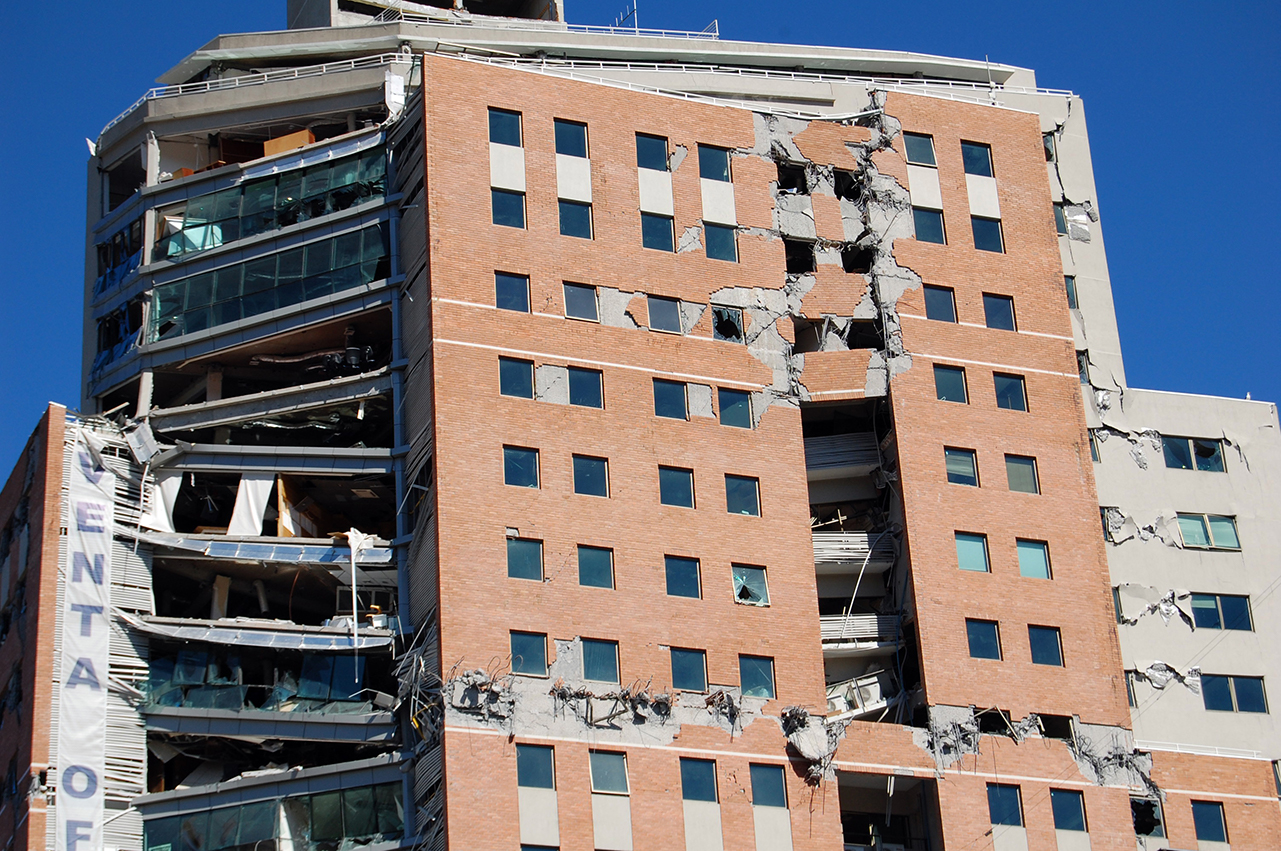

Most of the earthquake's energy is used to power the earthquake fracture growth or is converted into heat generated by friction. It is estimated that only 10 percent or less of an earthquake's total energy is radiated as seismic energy. This process of gradual build-up of strain and stress punctuated by occasional sudden earthquake failure is referred to as the elastic-rebound theory. This energy is released as a combination of radiated elastic strain seismic waves, frictional heating of the fault surface, and cracking of the rock, thus causing an earthquake. This continues until the stress has risen sufficiently to break through the asperity, suddenly allowing sliding over the locked portion of the fault, releasing the stored energy. Once the fault has locked, continued relative motion between the plates leads to increasing stress and, therefore, stored strain energy in the volume around the fault surface. Most fault surfaces do have such asperities, which leads to a form of stick-slip behavior. The sides of a fault move past each other smoothly and aseismically only if there are no irregularities or asperities along the fault surface that increases the frictional resistance. Tectonic earthquakes occur anywhere in the earth where there is sufficient stored elastic strain energy to drive fracture propagation along a fault plane. Regions most at risk for great loss of life include those where earthquakes are relatively rare but powerful, and poor regions with lax, unenforced, or nonexistent seismic building codes. The ten largest recorded earthquakes have all been megathrust earthquakes however, of these ten, only the 2004 Indian Ocean earthquake is simultaneously one of the deadliest earthquakes in history.Įarthquakes that caused the greatest loss of life, while powerful, were deadly because of their proximity to either heavily populated areas or the ocean, where earthquakes often create tsunamis that can devastate communities thousands of kilometers away. The energy released was approximately twice that of the next most powerful earthquake, the Good Friday earthquake (27 March 1964), which was centered in Prince William Sound, Alaska. The 1960 Chilean earthquake is the largest earthquake that has been measured on a seismograph, reaching 9.5 magnitude on. The 1976 Tangshan earthquake, which killed between 240,000 and 655,000 people, was the deadliest of the 20th century. Most houses in the area were yaodongs-dwellings carved out of loess hillsides-and many victims were killed when these structures collapsed. One of the most devastating earthquakes in recorded history was the 1556 Shaanxi earthquake, which occurred on 23 January 1556 in Shaanxi, China. The apparent 3D volumes of the bubbles are linearly proportional to their respective fatalities.

Main article: Lists of earthquakes Earthquakes (M6.0+) since 1900 through 2017 Earthquakes of magnitude 8.0 and greater from 1900 to 2018. The epicenter is the point at ground level directly above the hypocenter. An earthquake's point of initial rupture is called its hypocenter or focus. Earthquakes are caused mostly by rupture of geological faults but also by other events such as volcanic activity, landslides, mine blasts, and nuclear tests. In its most general sense, the word earthquake is used to describe any seismic event-whether natural or caused by humans-that generates seismic waves. When the epicenter of a large earthquake is located offshore, the seabed may be displaced sufficiently to cause a tsunami. The word tremor is also used for non-earthquake seismic rumbling.Īt the Earth's surface, earthquakes manifest themselves by shaking and displacing or disrupting the ground.

The seismicity at a particular location in the Earth is the average rate of seismic energy release per unit volume. The seismic activity of an area is the frequency, type, and size of earthquakes experienced over a particular time. Earthquakes can range in intensity, from those that are so weak that they cannot be felt, to those violent enough to propel objects and people into the air, damage critical infrastructure, and wreak destruction across entire cities. An earthquake (also known as a quake, tremor or temblor) is the shaking of the surface of the Earth resulting from a sudden release of energy in the Earth's lithosphere that creates seismic waves.


 0 kommentar(er)
0 kommentar(er)
